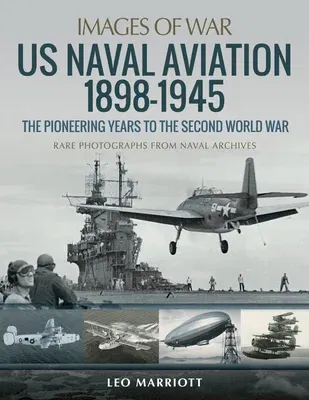Dramatic shots of the attack on Pearl Harbor and the carrier battles
of the Coral Sea and Midway with quality that is now expected from the
Images of War series.
The Japanese attack on Pearl Harbor on 7 December 1941 sank or crippled
almost all of the battleships belonging to the US Navy's Pacific Fleet,
but the fleet's aircraft carriers survived to demonstrate that naval
aviation was now the dominant factor in the struggle at sea, turning the
tide of the Pacific War. That the US Navy had the necessary ships,
aircraft and crews was the result of pioneering, far-sighted decisions
made in the pre-war years. Before the First World War the navy had
recognised the potential of aircraft at sea, and it went on to develop
the techniques and equipment that contributed so much to the defeat of
the Japanese. This is the fascinating story Leo Marriott tells in this
photographic history.
In a selection of over 200 rare photographs he traces the growth of US
naval aviation from the flimsy seaplanes of the first years of the
twentieth century to the mighty armadas that challenged those of the
Japanese and, after the carrier battles at Coral Sea and Midway, led the
advance across the Pacific. Key aspects of the history are the navy's
first aircraft carriers of the 1920s and the tremendous progress made in
the decades between the wars in tactics and strategy as well as in the
design of ships and aircraft.

